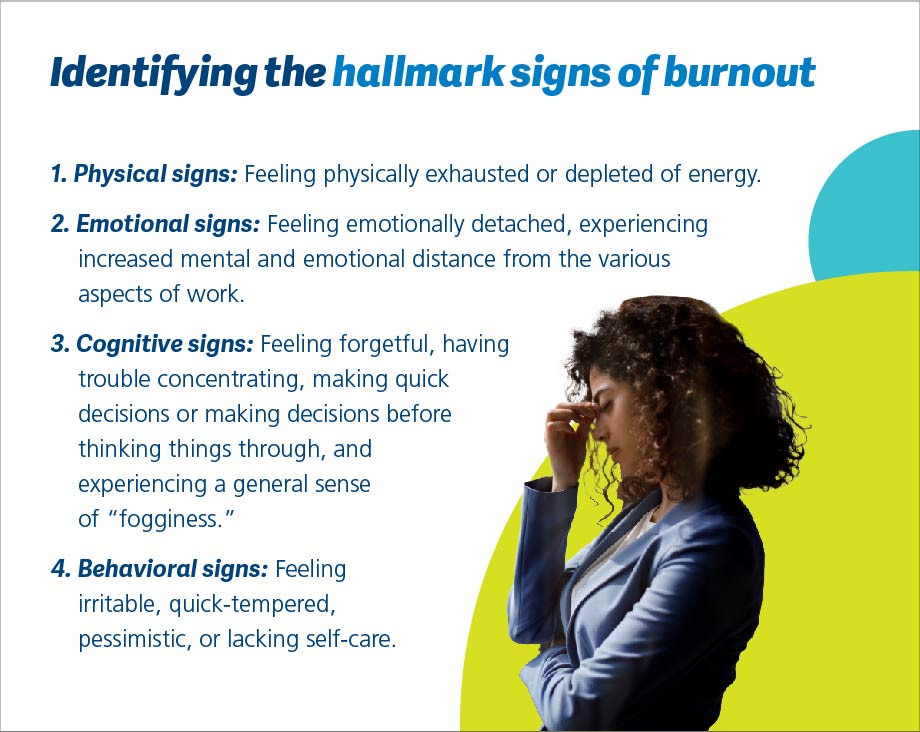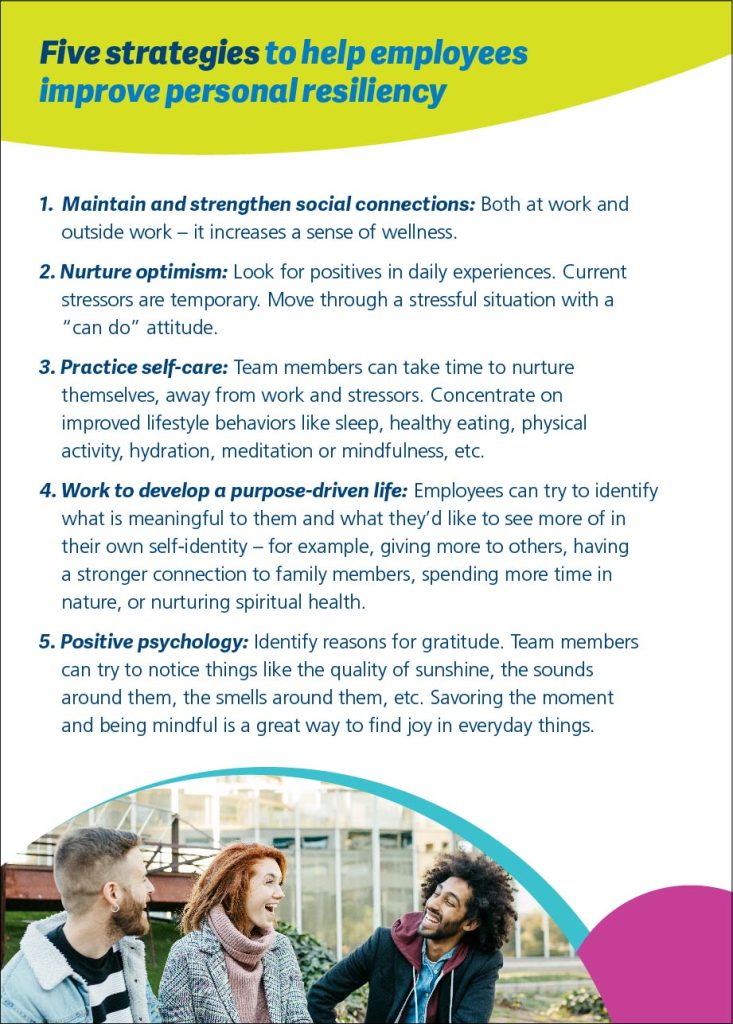
Build Resiliency. Avoid Burnout.
October 06, 2022Exploring ways to address and reduce work-related stress.
The COVID-19 pandemic triggered one of the most significant changes to the workforce in generations, shifting the workplace for many of us from conference room to living room practically overnight. This “new normal” has had a transformational impact on the work experience, bringing change not only to where we work, but how we work: making adjustments to work roles, schedules, routines, and priorities. These changes can lead to added work-related stress, and ultimately burnout. A recent study by the employment website Indeed found that two-thirds of workers surveyed said the pandemic has worsened employee burnout.
When stress gets to be severe enough, and we have depleted our internal resilience, we can develop burnout.
Identifying burnout
Burnout is a series of experiences that occur in relationship to workplace stress. These burnout experiences in the workplace can be seen through increased absenteeism, increased use of sick leave, decreased productivity, and, eventually, leaving the workplace altogether.

How burnout happens
There are several circumstances that can lead to employee burnout. Some of the most common include:
Excessive workload: The most basic way burnout occurs is when there is a mismatch of the demands at work and the resources employees have. Most of the time, that resource is time. Being asked to do too much, too quickly can be one of the root causes of burnout.
Lack of control: If a team member doesn’t feel they have any ability to claim some control over their work, that’s another root cause of employee burnout.
Lack of community at work: Humans are social beings. One of the worst things that can be done to a person is cutting them off from their social connections. Work is where individuals spend most of their waking lives. If an employee’s workplace is hostile, or they feel separated from work, or are working remotely and don’t do extra things to build community, that can lead to the development of burnout. Additionally, if an employee feels discrimination or intimidation, or doesn’t have the ability to reach out to get help or assistance, that can be a cause as well.
Lack of recognition or reward: Individuals like positive reinforcement and recognition of accomplishment. Without this, it is a sure-fire way to experience burnout.
Mismatch of values: Individuals seek value in where they’re working and want to feel that they’re making a difference. If their values don’t resonate with those of their workplace, they can feel detached, which can lead to burnout.
Work is inherently stressful. Fortunately, there are strategies to help employees build resiliency and prevent stress from progressing into burnout.
Strategies to build resiliency
Resiliency is being able to adapt to unforeseen and stressful situations. If we’re nurturing our resiliency, we can bounce forward from stressors more easily. Although it’s an extremely effective tactic, we’re not all born knowing how to do it. It is a learned skill. Think of resiliency as a series of activities and mental attitudes that can improve over time, allowing us to better withstand stress. It takes intentionality, time, and repetition to master.
Here are five general strategies to help employees improve personal resiliency.

Focusing on employee wellbeing
Employee burnout is a reality employers can’t afford to ignore. Employee engagement, productivity, and growth are never sustainable without a focus on employee wellbeing.
Employers are doing a lot to address burnout and help cultivate a mentally healthy workplace. Many are increasing their support of mental health services and have enhanced or implemented workplace wellbeing programs. They’re resetting working practices such as urging employees to set boundaries and work regular hours, encouraging vacations, or instituting company-wide wellness initiatives.
At Univera Healthcare, for example, we have a variety of wellness programs and resources for our employees. We provide free virtual fitness classes and regularly scheduled wellness challenges, and our wellness team hosts virtual webinars, Lunch and Learns, and “live” video coffee chats.

When employees are engaged, burnout decreases, and productivity and wellbeing increase.
Another way you can help your employees avoid burnout:
Share our Health and Wellness resources with your team for information on health tips,
access to fitness videos, and more.
